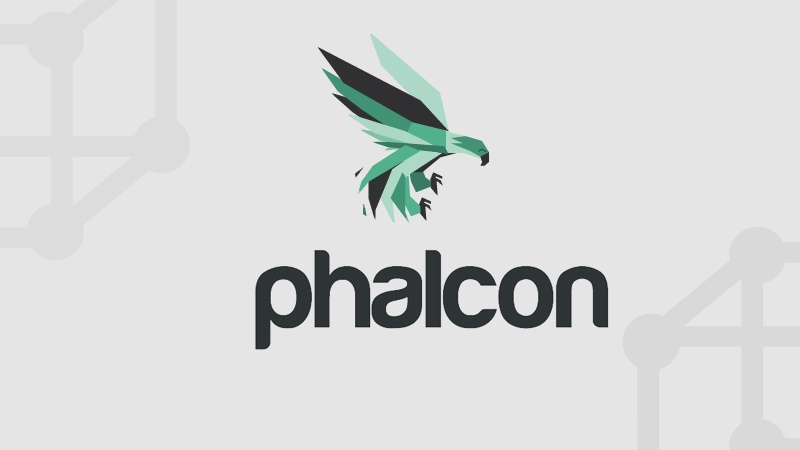Introducing the Phalcon framework, its advantages and disadvantages
PHP is a server-side open-source language that is very popular among web page programmers. Updating this programming language through the production of various frameworks, such as Lavarel, Yii, CakePHP, etc., has made it one of the most beloved programming languages. In this article, we will review one of the ultra-fast and high-end PHP programming language frameworks, called Phalcon, and we will get familiar with the advantages and disadvantages of using it.
What is Phalcon?
Phalcon Framework is one of the top PHP language frameworks that is very well integrated thanks to the MVC architecture. The alpha version of the framework came in 2012 and has always been open-source for developers.
The core of this framework is based on the C and Zephire programming languages, plus it is the first framework to implement Object-Relational Mapping (ORM) methods in the C programming environment. In other words, with the help of ORM, information in various databases such as MySQL can come to common objects (such as Class) in object-oriented programming.
The Phalcon Framework is basically a C programming language plugin that you do not need to learn C to learn so that you are familiar with PHP. You will also be able to compile all the code needed for PHP using Zephire.
| Read More: Why should we use the Laravel framework? |
Benefits of Phalcon Framework
Function
The main motivation and goal of designing the Phalcon framework is to speed up code execution, reduce resource usage, and better process large volumes of users. In addition, the most important advantage of the Phalcon framework over its peers is the efficient use of memory, which in principle makes the language more efficient and effective.
In fact, because the Phalcon framework does not use any kernel files, the number of requests per second (Request Per Second) is much lower than other frameworks.
Statistics show that the Phalcon framework is capable of completing 1,400 requests per second, while other frameworks take longer to do so.
Also, with the Phalcon framework, fewer files are used for each request, which results in the excellent performance and speed of this framework. In the image below, the huge difference between Phalcon and other frameworks is quite obvious:
The Phalcon framework completes 1000 requests in less than a second, while other frameworks perform much worse.
The Phalcon framework is a combination of PHP and C programming languages, each of which works separately with different modules. This will increase the speed of data collection from the database and make it as easy as possible.
Equipped with ORM:
The data of some applications in the database is constantly changing, while in others, this data is rarely changing. So, the Phalcon framework is a better option for programmers to read and write data from the database as quickly as possible. In addition, the compatibility of this framework with C programming language and cooperation through the Object-Relational Mapping method makes more coordination between the database and data and, in practice, makes it easier to access them.
MVC architecture:
MVC software architecture is an architectural model for modern software. In fact, the Phalcon framework classes, written in the Zephire environment, enable the MVC architecture to run in software. In other words, if the software is developed by the Phalcon framework, any requests sent by users to its resources will be primarily managed by the MVC architecture, making it easier for programmers to create large projects.
Some other advantages of this architecture are:
- Logic separates software from the user interface (UI) and database layers.
- Specifies the location of different codes for more stability.
Use of low resources:
As you run the PHP programming language, the Phalcon framework runs without any lag, so as the number of users on a site increases, the Phalcon framework consumes less server space. In addition, thanks to the C programming language, this framework, unlike PHP programming language, works as a compile. Of course, until there is no need to change the code, practically no compilation, which increases its speed.
Phalcon Query Language:
The Phalcon Framework Query Language, or PHQL, is a high-level object-oriented dialect originally written in C language. In fact, using SQLite technology in the C language library makes database management easier for programmers. In addition, this technology creates less memory footprint (Low Memory Footprint) and therefore ensures database security.
Volt Molding Motor:
The default template engine on the Phalcon Volt framework is actually inspired by its Python counterpart, Jinja. Using Volt, in fact, makes the design and development of the software user interface (View) easy.
Other benefits of the Phalcon framework
- Separation of all software components by Dependencies Injection
- Having different languages at the same time (i18n)
- More security due to encryption of codes and hashing of passwords (Password Hashing)
- Manage JavaScript libraries and CSS content in applications
- Notify the user via notifications thanks to Flash Massages
| Read More: Why choose PHP language? |
Disadvantages of the Phalcon framework
- Poor publicity and lack of awareness of programmers about the existence of Phalcon
- No compiled plugin
- Complex and difficult installation
- Do not run on shared hosts
- Programming language source code C
- No Helpers (for example, you need to convert raw PHP code to create a security image)
- A small community so that the solution to your mistakes and answers to your questions can not be found anywhere.
Conclusion
Choosing between different frameworks is always a very difficult task for developers. In fact, this choice depends directly on the goals of your project. For example, working with the Phalcon framework is a bit time-consuming and not suitable for time-limited projects. On the other hand, because they can manage and process a large number of requests in a fraction of a second, they are the best option for designing and developing mobile applications.

